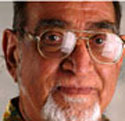
By Asghar Ali Engineer
11 November 2015
Dara Shikoh has made seminal contribution to the composite culture of India. He was appointed heir apparent by Shah Jahan and had he become emperor of India it would have certainly made much difference to religio-cultural scene in India. Dara Shikoh had learnt Sanskrit and studied the Hindu scripture in original. He translated Upanishads into Persian directly from Sanskrit and called it Sirr-e-Akbar (The Great Mystery). And in introduction to this work he says that one finds in Upanishads the concept of Tawhid (the doctrine of Unity of God, the most fundamental doctrine of Islam) after the Qur'an and perhaps the Qur'an refers to Upanishad when it refers to Kitab al-Maknun (The Hidden Book). His work Majma`ul Bahrayn (Mingling of the Two Oceans i.e. Hinduism and Islam) is very seminal work in the history of composite culture of India.
Dara Shikoh who was the disciple of the disciple of Mian Mir, the great Sufi saint who had laid the foundation stone of the Har Mandir in Amritsar at the instance of the Sikh Guru shows in this book that there is great deal of similarities between these two great religions Hinduism and Islam. He divides his tract into twenty sections like The Elements, The Senses, The Religious Exercises, The Attributes, and the Great Resurrection and so on. In each section he discusses similarities between Hinduism and Islam.
For example, in the first section "Discourse on the Elements" he compares the concept of these elements in Islam and Hinduism. They are five in umber i.e. Arsh-i-Azam (The Great Throne); secondly the wind, thirdly the Fire; Fourthly the water and Fifthly the Dust. In the Indian language these are called Panch Bhut namely Akash, Vayu, Tejas, Jala and Prithvi. He then discusses these elements and their similarities in both the traditions. Dara Shikoh for example compares Ruhi-i-Azam with Jivatma.
Then coming to Sifat-I-Allah Ta`ala i.e. Divine Attributes he says in Islamic Sufi tradition there are two Beauty (Jamal) and Majesty (Jamal) while in Indian tradition it is three called Triguna called Sattva, Rajas and Tamas which mean Creation, Duration and Destruction. Then he goes on to compare Brahma, Vishnu and Mahishvara with Jibrail, Mika'il and Israfil. He says that Brahma or Jibra'il is the (Superintending angel) of Creation; Vishnu or Mika'il is the angel of Duration (or Existence) and Mahishwara or Israfil is the angel of Destruction. Dara Shikoh further says that water, wind and fire are also allied with these angels. Thus water goes with Jibra'il, fire with Mika'il and air with Israfil. Similarly Brahma is water, Vishnu is fire and Maheshwara is air.
In all these 20 sections in Majma`ul Bahrayn Dara Shikoh finds similarities between both Hindu and Islamic (particularly Sufi) traditions. The fanatics and fundamentalists in both the traditions denounce each other and try to prove the truth of their own religion. In such circumstances it is highly necessary to popularise writings of persons like Dara Shikoh who uphold the truth of all religious traditions. The Sufi Islam has been a bridge between Hindus and Muslims in India. The very fundamental doctrine of Sufism has been Sulh-I-Kula i.e. peace with all.
The Sufis go with essence, not with phraseology or terminology. The Sufis studied the local traditions and adopted many of them. Even in the Qur'an one finds remarkable similarities between some of the Hindu traditions and Islamic tradition. For example in Indian tradition we find Stayam, Shivam and Sundaram for God. One finds in the Qur'an Huwa'l Haq (He is Truth), Jamil (Sundaram) and Jabbar (Shivam). All three Attributes are there in the Qur'an.
Also, the often quoted saying that Vasudhaiva Kutumbukum (entire universe is a family) finds its reflection in the Holy Prophet's saying Al-Khalqu `Ayalullah i.e. entire creation is Allah's family. These are remarkable similarities between these two traditions. It is on these similarities that the Sufis and others built the bridges between the two communities. However, it is some political interests, which selectively and superficially use some traditions to divide Hindus and Muslims. Thus one can easily say that while religions unite the politics divide.
Among the `Ulema persons like Maulana Abul Kalam Azad came out with the doctrine of unity of religion (Wahdat-iDdin) which is also very constructive approach. There have been many Sufi saints in India like Mazhar Jan-i-Janan who accept Ram and Krishna as the Prophets of God as Allah has stated in the Qur'an that He has sent prophets to all nations. Thus we must promote similarities between Hindus and Muslims and there are abundant examples of these similarities in our scriptures.
Related Article:
Source: andromeda.rutgers.edu/~rtavakol/engineer/oceans.htm

No comments:
Post a Comment